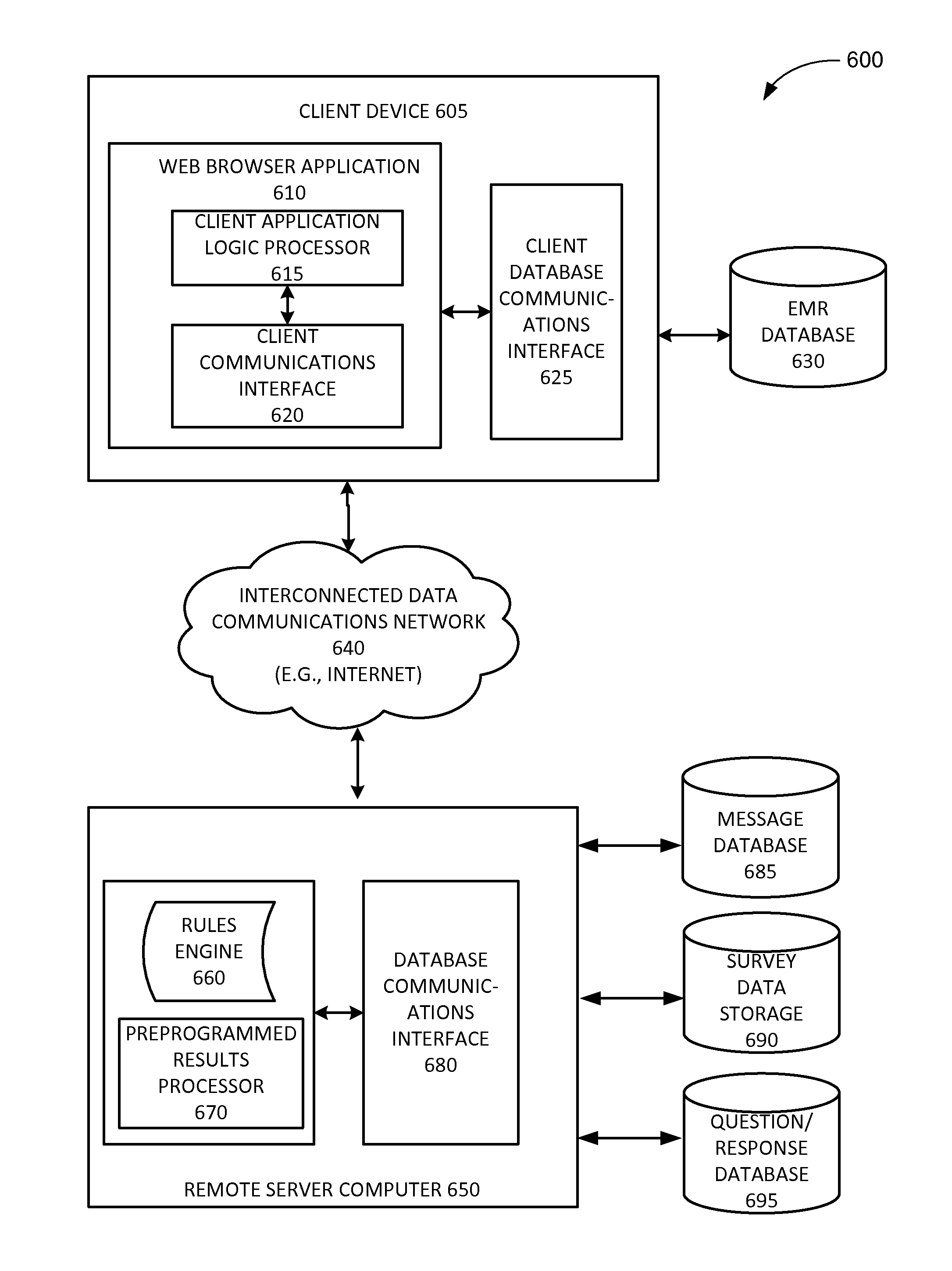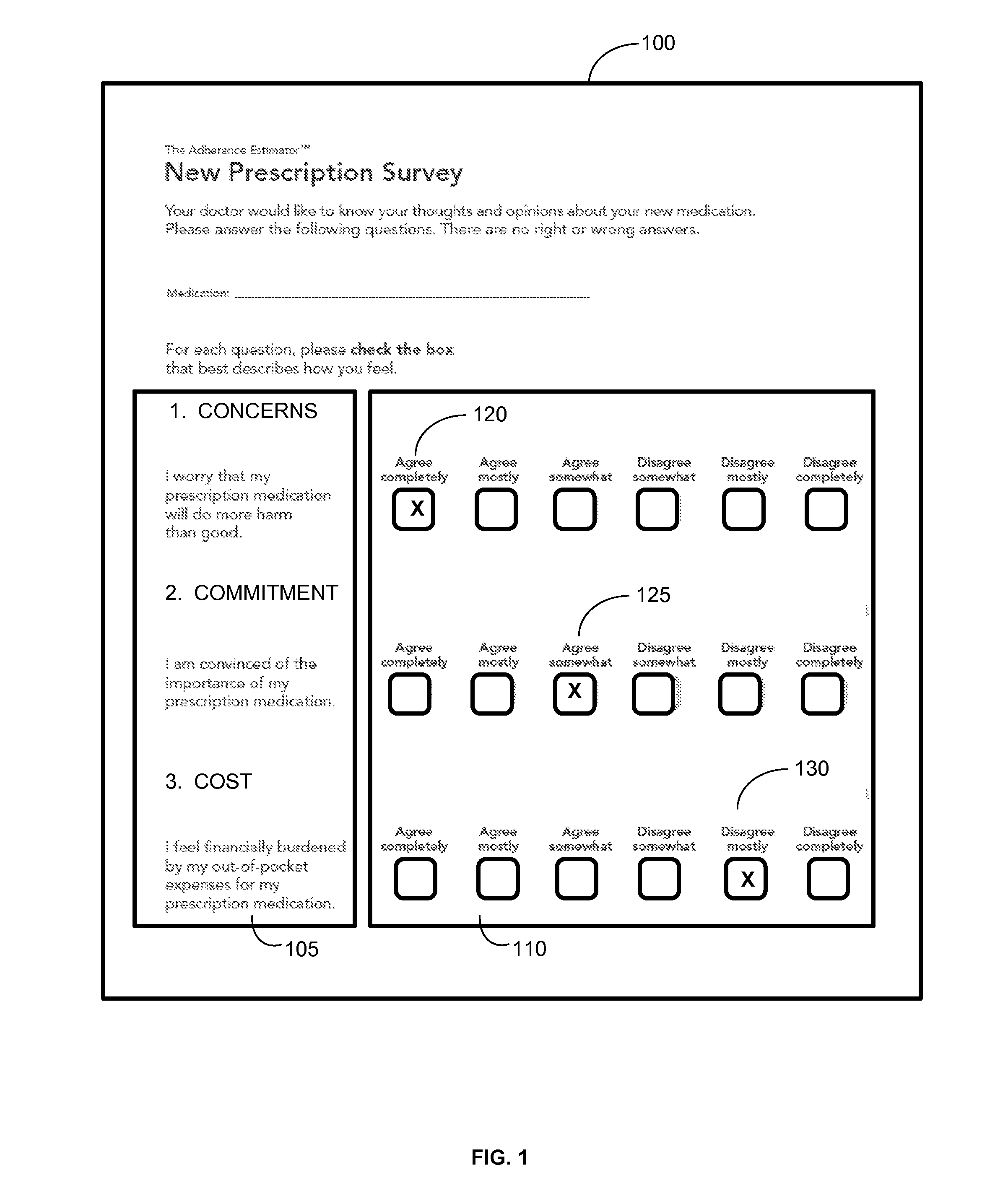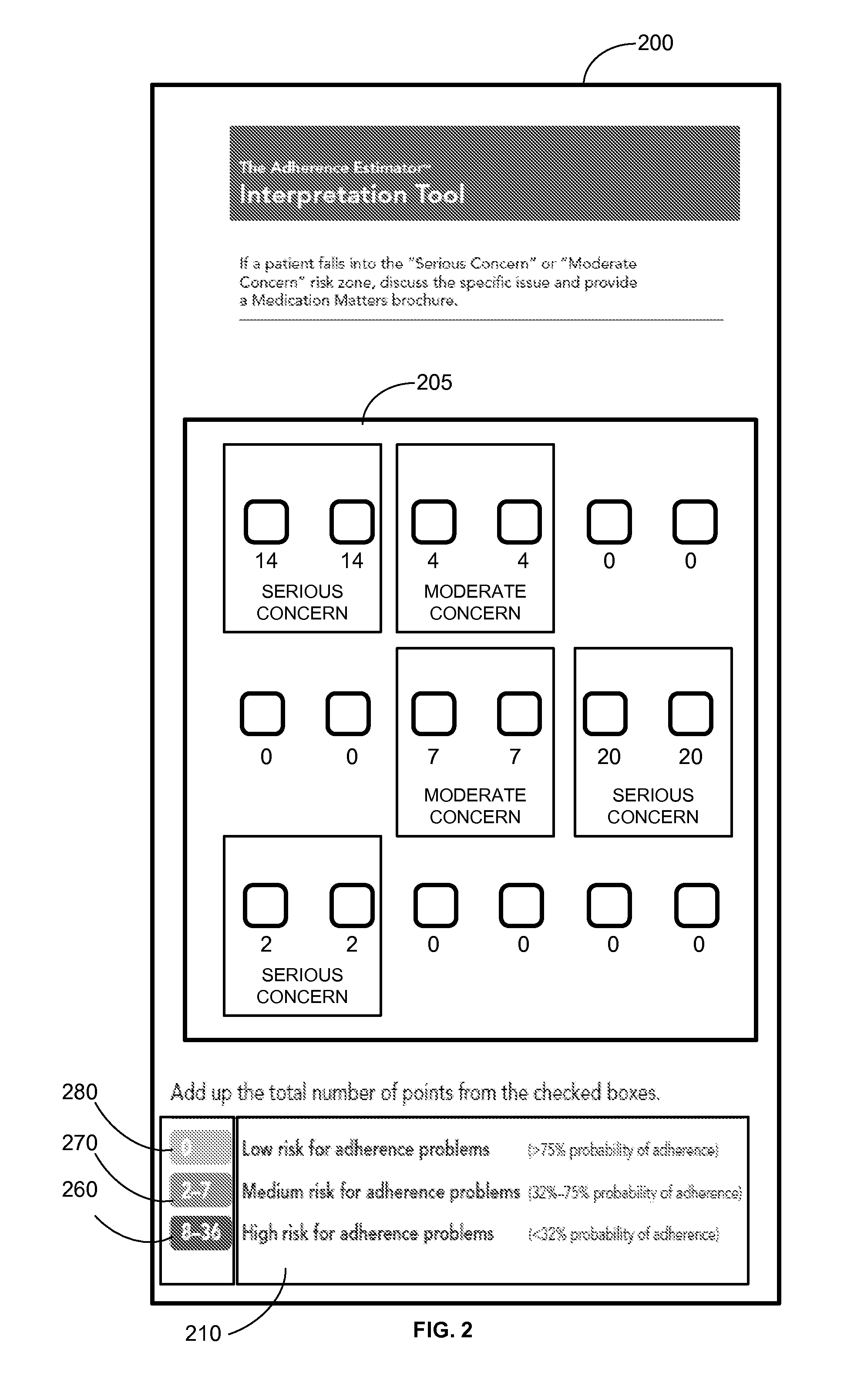Devices and methods for determining a patient's propensity to adhere to a medication prescription
a technology applied in the field of devices and methods for determining the propensity of patients to adhere to a medication prescription, can solve the problems of poor adherence to prescription medications, regardless of diagnosis, missed opportunities for patients, disease progression, and untoward clinical sequelae,
- Summary
- Abstract
- Description
- Claims
- Application Information
AI Technical Summary
Benefits of technology
Problems solved by technology
Method used
Image
Examples
Embodiment Construction
[0056]Reference will now be made in detail to embodiments of the invention, examples of which are illustrated in the accompanying drawings. Notably, non-electronic versions of the present invention may be implemented using paper, paper-based materials, plastic metal or wood, while electronically-implemented versions may be implemented using software, hardware, or any combination thereof, as would be apparent to those of skill in the art, and the figures and examples below are meant clarify without limiting the scope of the present invention or its embodiments or equivalents.
[0057]Electronic embodiments of the invention may be implemented on an computer network associated with an interconnected data communications network, such as the Internet, by programming and / or providing distributed hardware and software components for receiving, storing, scoring, and interpreting user responses, from a plurality of questions, and generating an output indicating a predicted risk group based on t...
PUM
 Login to View More
Login to View More Abstract
Description
Claims
Application Information
 Login to View More
Login to View More - R&D
- Intellectual Property
- Life Sciences
- Materials
- Tech Scout
- Unparalleled Data Quality
- Higher Quality Content
- 60% Fewer Hallucinations
Browse by: Latest US Patents, China's latest patents, Technical Efficacy Thesaurus, Application Domain, Technology Topic, Popular Technical Reports.
© 2025 PatSnap. All rights reserved.Legal|Privacy policy|Modern Slavery Act Transparency Statement|Sitemap|About US| Contact US: help@patsnap.com



